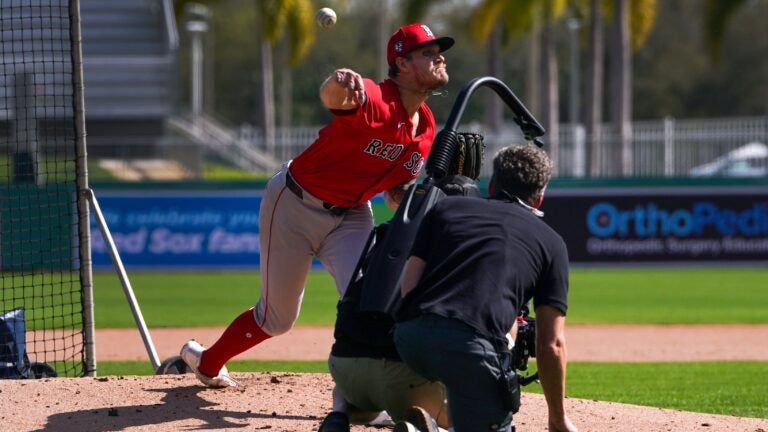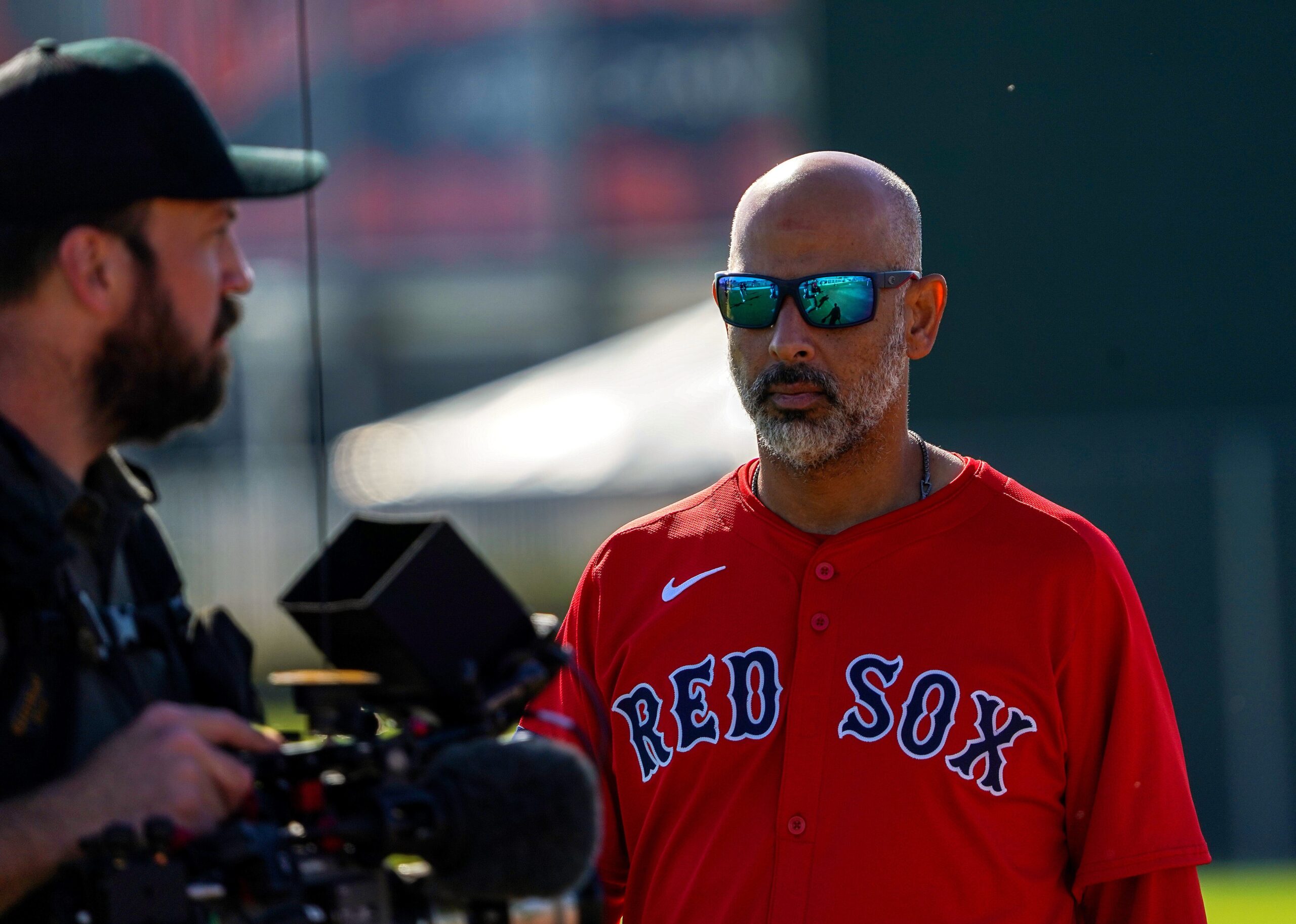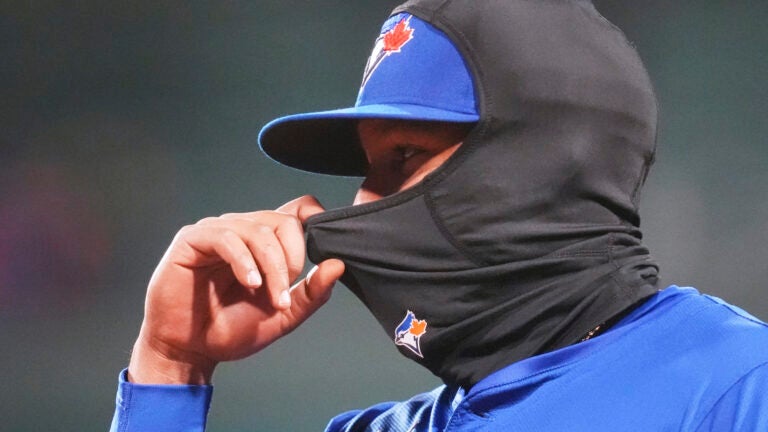Entertainment
Takeaways from a year spent with the Red Sox.

-
George Springer homers, Easton Lucas keeps perfect ERA as Toronto beats Red Sox 6-1 in frigid Fenway
-
Outstanding series ‘The Clubhouse: A Year with the Red Sox’ to debut on Netflix with revealing look at players’ psyche
The news that Jarren Duran contemplated suicide is the most stunning revelation in “The Clubhouse: A Year With the Red Sox.”
But mental health, and the internal and external pressures players face, is a thread throughout the entire eight-part documentary series, which debuted Tuesday on Netflix.
I caught up with Greg Whiteley, the four-time Emmy Award-winning director of the project, for a Q&A to include if he anticipated such candor, and other for other takeaways from a year spent with the Red Sox.
Q. One of the realities that I think will stun people when they watch this is how the players are their own worst detractors, and how the pressures can affect their frame of mind. We see players like Duran, Triston Casas, and Brayan Bello beating themselves up constantly. Did you have any sense going into this project that mental health would be such an important part of telling the 2024 Red Sox’ story?
A. I would have thought before I started this project that of all the major league sports, baseball perhaps might have been the most laid back. I mean, how many sports do you know that will mike up a player during a game and in the broadcast have a conversation with him? So I thought, ‘Baseball is sort of perfect, we’ll get to hang out with them’ … I don’t think I was prepared for the level of focus that is applied to this singular activity and the intensity with which they apply that focus. This sport, maybe because of the money and because of the nature of it, where you can be the best in the world at it and still fail 7 of 10 times, it requires a special kind of human to do this.
I think our job is to put the audience in the position of that subject and what life is like for them. I think we start to hit pay dirt as filmmakers when an audience starts to feel what they’re feeling and they’re starting to want what they want.
Part of how you do that is you just let the audience get to know the players as people. So whether it’s Jarren fixing his Bronco [after it breaks down outside of Fenway] or learning about his story of coming up through the minors, or the candid way he describes his struggles with mental health issues, you start to love him and care about him.
Q. Jarren has been candid about his mental-health struggles, but his detailing in Episode 4 of how he considered suicide stops you in your tracks. How did that conversation come about?
A. Well, we knew a little bit about his background, and hanging out with him during spring training and then during the balance of the season, I got the impression not only that there was maybe more to the story about his mental-health battles, but that Jarren was anxious to tell it. The way he would say it to me was, ’If there are kids out there that might be going through the same thing I’m going through, I would want them to know this.’ The way he explained it, when you’re going through it, you feel alone, you feel like you’re the only person in the history of planet Earth that has felt like this.
He felt it could be comforting for others if they knew that someone like him struggled, a major league All-Star baseball player. And so Jarren was the one that was leading that whole conversation.
Q. I came away from the documentary with even more respect for manager Alex Cora, who seems to have an almost instinctive knack for knowing what a player and a person needs at a given moment.
A. I’ve heard people say, ‘Well, Alex was a player and so he knows how to relate to players,’ but I think it’s something beyond that. He’s really gifted in his ability to look at someone and feel what they’re feeling and kind of know just what to say or what to do. A great example is that moment where he chooses to pinch hit for Tyler O’Neill with Wilyer Abreu. Wilyer was having a good year, but he wasn’t O’Neill. Alex knew that Wilyer’s grandmother was dying. For someone like me that doesn’t know what they’re doing, I’d go, ‘Well, give him the day off.’ But Alex recognized that Wilyer might need that and it could be something that is good for him, and if nothing else, you build trust with the player.

Q. In the last episode, as the team’s playoff hopes are slipping away, Duran expresses frustration that a couple of teammates, Rafael Devers and Kenley Jansen, are hanging out in the clubhouse rather than the dugout. They are two of the more notable Red Sox who aren’t in the documentary often. Why is that? Did some players just want to participate?
A. There were a couple of people early on that had expressed real interest in the project. I think when they learned that, ‘Hey, we want to come home with you, we want to film your back story, we’d love to go film your high school coach,’ they suddenly got skittish . . . There was a cadre of players that were totally on board with that, but for others that was such a foreign territory and they had completely understandable reasons to choose to keep a lower profile. Our deal with players was, ‘The moment you’re not comfortable, we won’t film you. You have to let us know what you’re comfortable with, and we’ll do that.’
Sign up for Red Sox updates
Get breaking news and analysis delivered to your inbox during baseball season.


